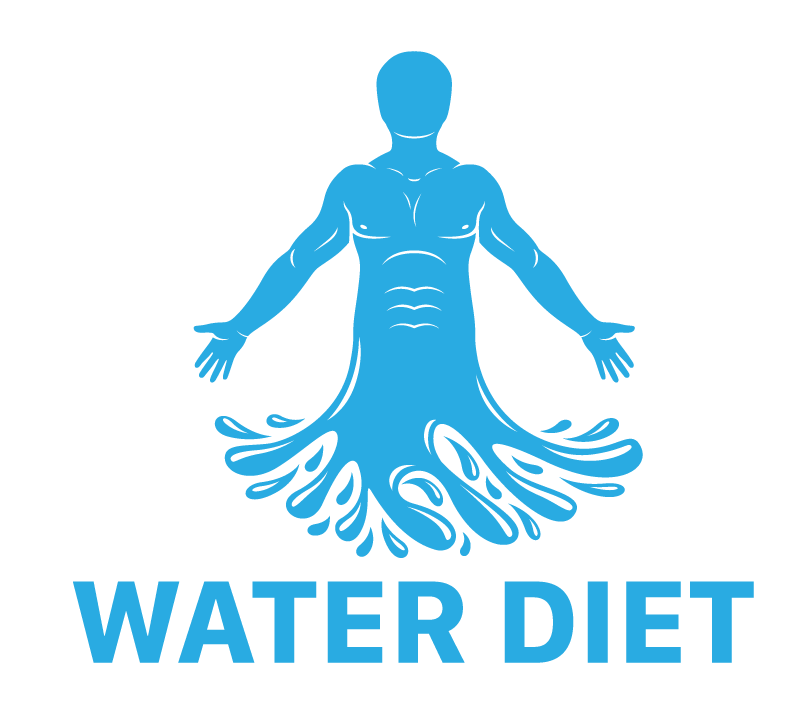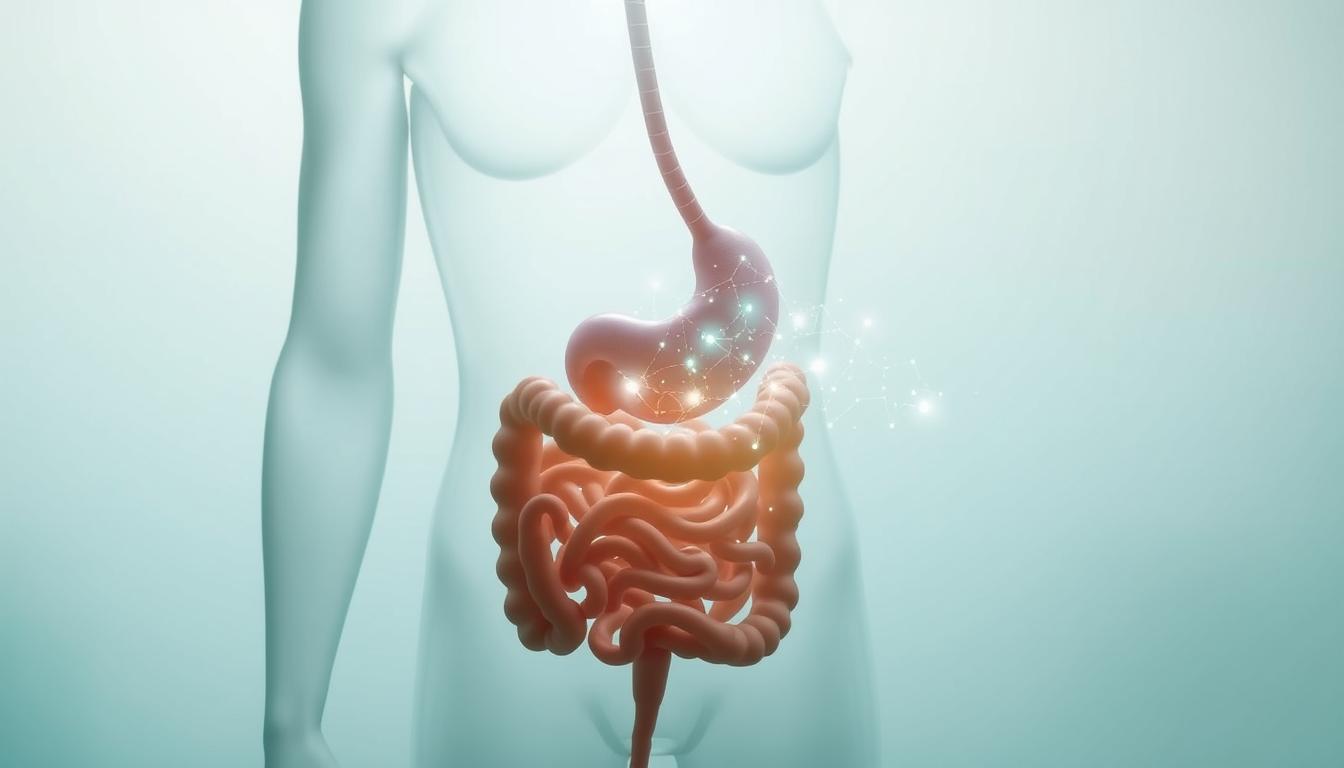The water diet combined with regular exercise is a powerful strategy for achieving fitness goals and losing weight. By following a water diet and incorporating workouts into your routine, you can optimize your weight loss journey and improve overall fitness.
Key Takeaways:
- Combining a water diet and regular exercise can lead to successful weight loss and improved fitness.
- A well-balanced diet, including fruits, vegetables, lean proteins, healthy fats, and whole grains, is essential for fueling the body during workouts.
- Proper nutrition after exercise, focusing on hydration, protein, and micronutrients, aids in muscle repair and overall recovery.
- Incorporating strength training, aerobic intervals, and other exercises can help beginners achieve weight loss goals at the gym.
- Using fitness equipment, such as resistance bands, cable pulleys, and kettlebells, can assist in weight loss and enhance workout effectiveness.
- Approach weight loss gradually and seek guidance from professionals to avoid potential risks.
Understanding the Water Diet
The water diet, known for its numerous benefits and weight loss potential, involves primarily consuming water and limiting calorie intake from solid foods. This approach is based on the idea that water can help suppress appetite, promote hydration, and aid in overall weight loss.
By following a water diet plan, individuals can experience various benefits. Firstly, it can help cleanse the body by flushing out toxins and waste products. Additionally, it can contribute to improved digestion and metabolism. Furthermore, the water diet is often used as a short-term weight loss strategy, as it can create a calorie deficit by reducing solid food intake.
| Water Diet Tips: |
|---|
| 1. Stay hydrated by consuming at least 8 glasses of water per day. |
| 2. Incorporate other low-calorie beverages like herbal tea and infused water. |
| 3. Avoid sugary drinks and processed foods. |
| 4. Consume water-rich foods like fruits and vegetables. |
| 5. Listen to your body’s hunger and fullness cues. |
While the water diet can be effective for short-term weight loss, it’s important to approach it with caution and not rely on it as a long-term solution. It is always recommended to consult with a healthcare professional or registered dietitian before embarking on any restrictive diet plan.
Importance of Hydration during Workouts
Regular exercise offers numerous benefits, including weight loss, improved cardiovascular health, increased muscle strength, and enhanced mental well-being. However, it’s important to stay properly hydrated during workouts to maximize performance and optimize the body’s ability to recover.
When we exercise, our bodies lose water through sweat, and even mild dehydration can have negative effects on physical performance. Dehydration can lead to decreased muscle strength and endurance, reduced coordination, and impaired cognitive function.
To ensure adequate hydration during workouts, it’s recommended to drink water before, during, and after exercise. The exact amount of water needed depends on factors such as duration and intensity of the workout, individual sweat rate, and environmental conditions. As a general guideline, aiming for at least 8-10 glasses of water per day, and an additional 1-2 glasses per hour of exercise, can help maintain proper hydration levels.
One effective way to monitor hydration is by checking urine color. Ideally, urine should be pale yellow or straw-colored, indicating good hydration. Dark-colored urine may be a sign of dehydration and a signal to increase fluid intake.
In addition to water, electrolytes like sodium and potassium are also important for maintaining proper hydration. These electrolytes help regulate fluid balance and muscle function. Including foods rich in electrolytes, such as bananas, oranges, and coconut water, can be beneficial for replenishing electrolyte levels post-workout.
Hydration Tips for Workouts:
- Drink water before, during, and after exercise to stay properly hydrated.
- Use urine color as a guide – aim for pale yellow or straw-colored urine.
- Consider electrolyte-rich foods and beverages to replenish electrolyte levels.
- Pay attention to your body’s thirst cues and drink when you’re feeling thirsty.
- In hot or humid conditions, increase fluid intake to account for higher levels of sweat.
- Avoid excessive caffeine and alcohol consumption, as they can contribute to dehydration.
The Importance of Hydration during Workouts
| Benefits of Hydration | Consequences of Dehydration |
|---|---|
|
|
By prioritizing hydration during workouts, you can optimize your performance, reduce the risk of dehydration-related complications, and ensure a safe and effective exercise routine. Remember to listen to your body, drink water regularly, and make conscious efforts to stay properly hydrated throughout your fitness journey. Cheers to your health and fitness success!
Fueling the Body for Workouts
A well-balanced diet is essential for providing the necessary fuel and energy to support workouts and optimize weight loss. It is important to focus on consuming a variety of nutrient-rich foods that nourish the body and support overall health and fitness goals. Here are some key components of a diet that can fuel your workouts and aid in weight loss:
- Carbohydrates: Carbohydrates are the body’s primary source of energy during physical activity. Opt for complex carbohydrates like whole grains, fruits, and vegetables, as they provide sustained energy and important nutrients.
- Protein: Protein is essential for muscle growth and repair. Include lean sources of protein such as chicken, fish, tofu, legumes, and low-fat dairy products in your diet.
- Healthy Fats: Incorporate sources of healthy fats like avocados, nuts, seeds, and olive oil. These fats help provide energy, support brain function, and aid in the absorption of fat-soluble vitamins.
- Hydration: Proper hydration is key for optimal performance and recovery. Drink plenty of water before, during, and after workouts to maintain electrolyte balance and prevent dehydration.
- Vitamins and Minerals: Ensure you’re getting a variety of vitamins and minerals through a diet rich in fruits, vegetables, and whole grains. These nutrients support overall health and help the body function optimally.
In the UK, there are plenty of options for maintaining a balanced diet that supports fitness goals. Take advantage of the diverse range of local foods and choose seasonal produce to maintain dietary diversity. By making informed choices and incorporating these key components into your diet, you can fuel your workouts and optimize weight loss.
It’s also important to remember that diet alone cannot guarantee weight loss. Combining a well-balanced diet with a regular exercise routine is crucial for achieving sustainable results. Incorporating strength training, aerobic intervals, and other forms of exercise can help maximize weight loss and improve overall fitness. By setting SMART goals, tracking progress, and staying motivated, you can work towards achieving your desired results.
| Component | Benefits |
|---|---|
| Carbohydrates | Provide sustained energy during workouts |
| Protein | Aids in muscle growth and repair |
| Healthy Fats | Supports energy production and brain function |
| Hydration | Prevents dehydration and maintains electrolyte balance |
| Vitamins and Minerals | Supports overall health and optimal body functioning |
Importance of Hydration
Proper hydration is essential for optimal performance and recovery during workouts. When you exercise, your body loses water through sweating, and it’s important to replenish those fluids to maintain hydration levels. Dehydration can lead to decreased energy, poor performance, and an increased risk of injury.
To stay hydrated during workouts, make sure to drink water before, during, and after exercise. The exact amount of water needed varies depending on factors such as intensity and duration of the workout, as well as individual needs. As a general guideline, aim to drink at least 8 cups (64 ounces) of water per day, and increase fluid intake during workouts to replace what you lose through sweat.
“Proper hydration is key for optimal performance and recovery.”
Remember, every individual is different, so it’s important to listen to your body and adjust your hydration needs accordingly. Keeping a water bottle with you during workouts can serve as a visual reminder to stay hydrated and make it easier to consume fluids throughout your exercise session.
Maximizing Post-Workout Recovery
Post-workout recovery is vital for optimizing muscle repair, replenishing energy stores, and enhancing overall fitness progress. To maximize your post-workout recovery, it is important to focus on proper nutrition, hydration, and micronutrients.
Hydration is key to replenishing fluid levels and restoring electrolyte balance after exercise. Aiming to drink enough water throughout the day is important, but especially after a workout. Consider adding a pinch of salt to your water or consuming a sports drink to replenish electrolytes lost through sweat.
In addition to hydration, consuming a post-workout meal or snack that combines carbohydrates and protein is essential for recovery. Carbohydrates help replenish glycogen stores, providing fuel for your next workout, while protein aids in muscle repair and growth. Opt for whole foods such as lean meats, eggs, legumes, and whole grains to ensure a steady supply of nutrients.
Lastly, don’t overlook the importance of micronutrients in post-workout recovery. Vitamins and minerals play a crucial role in overall recovery and can be obtained through a varied diet. Include plenty of fruits, vegetables, and whole grains in your meals to ensure you are getting a wide range of micronutrients. If needed, consider consulting with a registered dietitian to optimize your nutrition for recovery.
| Hydration Tips: | Post-Workout Meal Ideas: |
|---|---|
| – Drink water before, during, and after your workout | – Grilled chicken with quinoa and roasted vegetables |
| – Consider sports drinks or adding a pinch of salt to your water | – Greek yogurt with berries and a sprinkle of nuts |
| – Monitor urine color to ensure adequate hydration | – Salmon with sweet potato and steamed broccoli |
| – Avoid excessive caffeine or alcohol intake as they can dehydrate you | – Veggie omelet with whole grain toast |
Summary
Maximizing post-workout recovery is essential for optimizing your fitness progress. Remember to prioritize hydration by drinking water throughout the day and consider adding electrolytes to replenish what is lost during exercise. Additionally, focus on consuming a post-workout meal or snack that combines carbohydrates and protein to replenish energy stores and aid in muscle repair. Finally, don’t forget about the importance of micronutrients in overall recovery, so make sure to include a variety of fruits, vegetables, and whole grains in your diet.
Strategies for Effective Weight Loss at the Gym
Achieving effective weight loss at the gym requires a well-rounded exercise regimen that combines strength training, aerobic intervals, and other targeted exercises. Incorporating these strategies into your routine can help you burn calories, build muscle, and achieve your fitness goals.
Strength Training: Including strength training exercises in your workout routine can boost your metabolism and help you burn more calories throughout the day. Focus on compound movements such as squats, deadlifts, and bench presses, which engage multiple muscle groups simultaneously. Start with lighter weights and gradually increase the intensity as you build strength.
Aerobic Intervals: High-intensity interval training (HIIT) is an efficient way to maximize calorie burn and improve cardiovascular fitness. Alternate between short bursts of intense exercise, such as sprints or burpees, with periods of active recovery. This not only burns calories during the workout but also elevates your metabolism for hours afterward.
Targeted Exercises: In addition to strength training and aerobic intervals, incorporating targeted exercises can help tone specific muscle groups while burning calories. Focus on exercises that engage large muscle groups, such as lunges, push-ups, and rows. Incorporate these exercises into your workout routine to enhance overall muscle definition and increase fat burning.
| Exercise | Reps | Sets |
|---|---|---|
| Squats | 12-15 | 3 |
| Push-ups | 10-12 | 3 |
| Lunges | 10-12 (each leg) | 3 |
| Rows | 10-12 | 3 |
“Incorporating these strategies into your gym routine can help you achieve effective weight loss while improving strength and overall fitness.” – Fitness Expert
Remember, setting SMART goals is essential for staying motivated and tracking progress. Celebrate small victories along the way and make adjustments to your workout routine as needed. With dedication, consistency, and the right mindset, you can unlock fitness success and achieve your weight loss goals at the gym.
Utilizing Fitness Equipment for Weight Loss
Utilizing a variety of fitness equipment can enhance your weight loss journey by targeting different muscle groups and adding variety to your workouts. Whether you prefer resistance training, cardio exercises, or a combination of both, incorporating equipment like resistance bands, cable pulleys, and kettlebells can take your workouts to the next level.
Resistance bands are portable and versatile tools that can be used for a wide range of exercises, including strengthening your arms, legs, and core. They provide constant tension throughout the movement, helping to build lean muscle and increase calorie burn. Cable pulleys, on the other hand, offer a dynamic resistance that mimics real-life movements. They are ideal for targeting specific muscle groups and improving overall strength and stability.
Kettlebells are another fantastic option for weight loss. They combine strength training and cardiovascular exercise, providing a total-body workout that burns a significant number of calories. Kettlebell exercises engage multiple muscle groups, including your legs, glutes, core, and upper body, making them highly effective for fat loss.
| Equipment | Benefits |
|---|---|
| Resistance bands | Portable, versatile, and provide consistent tension for building lean muscle and increasing calorie burn. |
| Cable pulleys | Offer dynamic resistance, target specific muscle groups, and improve overall strength and stability. |
| Kettlebells | Combine strength training and cardiovascular exercise, engage multiple muscle groups, and are highly effective for fat loss. |
By incorporating these fitness equipment into your workouts, you can challenge your body in new ways, prevent plateaus, and keep your weight loss journey exciting and engaging. Remember to consult with a fitness professional to ensure proper form and technique when using these equipment for optimal results.
Gradual Approach to Weight Loss
It is crucial to approach weight loss gradually and seek guidance from healthcare and fitness professionals to ensure safety and avoid potential risks. Rapid weight loss can put stress on the body and may lead to nutrient deficiencies, muscle loss, and other health complications. By taking a gradual approach, you can set realistic goals and make sustainable lifestyle changes that promote long-term success.
One effective strategy for gradual weight loss is to focus on creating a calorie deficit through a combination of diet and exercise. This can be achieved by reducing calorie intake through portion control and choosing nutrient-dense foods, while also increasing physical activity to burn more calories. It’s important to strike a balance between the two, ensuring that you are consuming enough nutrients to support your body’s needs and fuel your workouts.
Additionally, tracking your progress can be a helpful tool when it comes to weight loss. By keeping a record of your food intake, exercise routine, and other relevant factors, you can identify patterns, make adjustments, and stay accountable to your goals. This can be done through a journal or using apps and websites that offer tracking features.
Remember, sustainable weight loss is a journey that requires patience, commitment, and support. Surrounding yourself with a supportive network of friends, family, or even joining a weight loss community can provide the encouragement and motivation needed to stay on track. By taking a gradual approach and seeking guidance from healthcare and fitness professionals, you can achieve your weight loss goals while prioritizing your health and well-being.
Conclusion
By combining the power of a water diet and regular exercise, individuals can unlock fitness success, achieve weight loss goals, and experience numerous health benefits.
A well-balanced diet is crucial for fueling the body and aiding in recovery during exercise. It includes ample fruits, vegetables, lean proteins, healthy fats, and whole grains. Carbohydrates and fats are the body’s primary energy sources during physical activity, while protein is important for muscle growth and repair.
Proper nutrition after a workout is important for replenishing energy stores, repairing muscle tissue, and enhancing overall recovery. Hydration, protein, and micronutrients play a key role in post-workout recovery. Rehydration is important for restoring electrolyte balance, and consuming carbohydrates helps refill glycogen stores. Protein is crucial for muscle repair and growth, and micronutrients like vitamins and minerals aid in overall recovery.
In the UK, maintaining a balanced diet for fitness goals can be achieved by making informed choices within the diverse options of local foods. Seasonal produce is also beneficial for maintaining dietary diversity.
Incorporating strength training, aerobic intervals, anaerobic phases, squats, and cardiovascular training can help beginners lose weight at the gym. It is important to set SMART goals, maintain a well-rounded exercise regimen, track progress, stay motivated, and overcome obstacles to achieve fitness goals. Using fitness equipment like resistance bands, machines, cable pulleys, kettlebells, TRX suspension tools, and barbells can also assist in weight loss.
Losing weight at the gym enhances physical and mental well-being, improves body composition, and boosts cardiovascular fitness. Staying committed to a workout regimen, optimizing the duration of exercise, and utilizing gym facilities are important for safe and effective weight loss. However, it’s important to approach weight loss gradually and seek guidance from healthcare and fitness professionals to avoid any risks.




